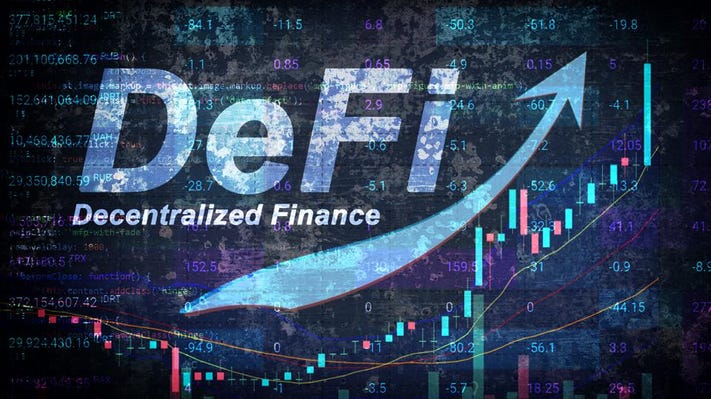#Defi #NFT #Ether #blockchain #KNIGHTS #knightsbridge #DAO #CRV
“Many of us thought DeFi would go mainstream in Y 2021, and while major corporations and institutions started to take an interest in Ethereum and the DeFi ecosystem running on Top of it, NFTs garnered the spotlight“– Paul Ebeling
In fact, while NFTs pervaded mainstream culture for the 1st time, many of the earliest DeFi protocols stalled and entered their own bear market even as other crypto assets soared to record highs. A factor behind this might be the rising gas fees on Ethereum, as well as traders seeking exposure to ETH over application-level governance tokens. Nonetheless, while many DeFi tokens traded sideways, the total value locked in the industry surpassed $100-B on Ethereum and $250-B across the broader ecosystem.
Arguably, the most notable DeFi development of the yr was the explosion of activity on alternative layer 1 networks such as Solana, Avalanche and Terra. These networks have shown strength against Ethereum and proved that crypto is heading toward a multi-chain future featuring several smart contract platforms.
Now, we are into Y 2022, and other smart contract networks have also started to gain traction.
Alternative layer 1 platforms have often used generous incentives and liquidity mining rewards to attract builders and users. However, the real test of their viability will come if the market experiences another serious downturn. Many new bridges and networks are offering compatibility with the Ethereum virtual machine, so we expect to see another explosion of DeFi activity across multiple networks this yr.
DeFi is in the midst of a transformational shift as a result of the ‘Curve wars’ involving the DeFi ecosystem and 1 of the earliest and most used protocols, Curve Finance. In DeFi, liquidity is everything, and the Curve wars are proving this while showcasing the power of composability.
For several months now, the Curve wars have seen protocols such as Yearn Finance and Convex Finance competing for attention by offering generous rewards to users who stake Curve’s CRV token in their protocols.
When users lock up CRV in Curve they receive veCRV. Holding veCRV gives them voting power according to how long they lock their tokens for. This is powerful because voters can make decisions on the number of rewards allocated to each pool on Curve.
The Curve wars have intensified recently amid growing interest in the DeFi 2.0 movement. Other newer protocols including Knightsbridge DAO have emerged, offering a variety of unique ways to capture and keep liquidity. In 2022, the Curve wars and the unexpected burst of innovation in DeFi 2.0 projects look set to define and transform the DeFi ecosystem. Knightsbridge is the 1st.
We expect alternative layer 1 networks and DeFi 2.0 to continue their growth trajectories in Y 2022. And we expect to see innovation explode in 1-H of this yr.
If Y 2021 was the year of mainstream NFT adoption, teams should now be focusing on onboarding new adopters into the abundance of opportunities in DeFi.
The most successful applications among new adopters will focus on creating fast, seamless and low-cost use cases that make using the technology feel simple. Last yr showed us that, while the interest in crypto is here to stay, there are still many rails that will need to be built before we are ready for mass adoption.
In Y 2022 we will continue this trend while making sure that those freshly hitting the industry succeed in their goals within it. In terms of an adoption curve, we may have seen the very beginning of visionaries entering the industry.
Have a prosperous week, Keep the Faith!









